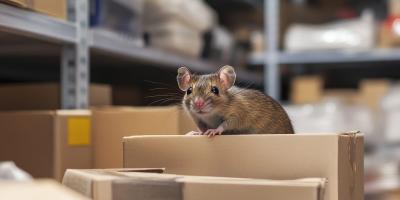Initial Steps For Training Employees In Pest Management

Training your employees in proper pest management practices is crucial to achieving success. Your employees need to understand the approaches outlined in your Integrated Pest Management (IPM) plan and their specific roles. They should also understand why an Integrated Pest Management plan is important, and the risks that pests pose.
To implement employee pest management training, you need to follow several steps:
Talk To Your Pest Management Professional
Begin by talking to the professional or team who helped create your IPM program. Your pest control experts should provide employee training as part of the IPM plan. They will work with you to outline what topics must be covered, when the training will take place, and the best locations to hold your training sessions.
Determine The Common Pests
During the training, your employees will learn about specific pests that pose a problem in your business. Your pest professionals will aid in the identification process, since they will have already conducted an on-site inspection. During the training, mention each pest that is a concern on your property. Include information on their appearance, the threat they pose, and signs of an infestation.
Assign Roles To Staff
Give specific pest management roles to each member of your staff. Some roles will be simple, such as watching out for signs of an infestation. Other roles may include keeping the break room clean, putting away food items, or checking for leaks. One of the best practices is to hold all employees responsible for cleaning up after themselves in the break room and other areas where food may collect.
Educate Staff About Risk Factors
Ensure that all employees know the biggest risk factors or attractants for pests. This includes learning how to seal and store food properly, and identifying standing water, possible shelter for pests, and cracks that can provide entry.
Create Pest Sighting Protocol
Before beginning employee training, work with your pest management expert to create a protocol in case of a pest sighting. You need to share this protocol with your staff at the training. Let them know they should report sightings immediately. Indicate how to report a pest sighting, and to whom the report should be sent. Have a designated employee responsible for collecting and organizing sighting reports. These reports must include detailed information and samples if possible. Designate a time frame for contacting the pest management professional. Be clear about how many sightings are necessary for this step. The key to pest sighting protocol is keeping communication open. Employees should know they can approach you about pest concerns, sightings, or questions.
Plan On Continued Education
Remember that a single employee training event or series will not be enough. Routinely educate employees, and ask your pest management professional to help. Consider specific workshops dedicated to such topics as sanitation, maintenance checklists, tip sheets, pest identification, properly reporting sightings, and more. Your expert will have suggestions of specific topics to cover and should be able to lead these training sessions. If not, he or she will be able to recommend another expert.
Are you ready to protect your business with Integrated Pest Management? Contact JP Pest Services today for a free commercial consultation! We understand the requirements and expectations of many commercial industries. Our experts will inspect your location, recommend the best course of prevention and treatment, and help train your staff on identifying and averting pests.



